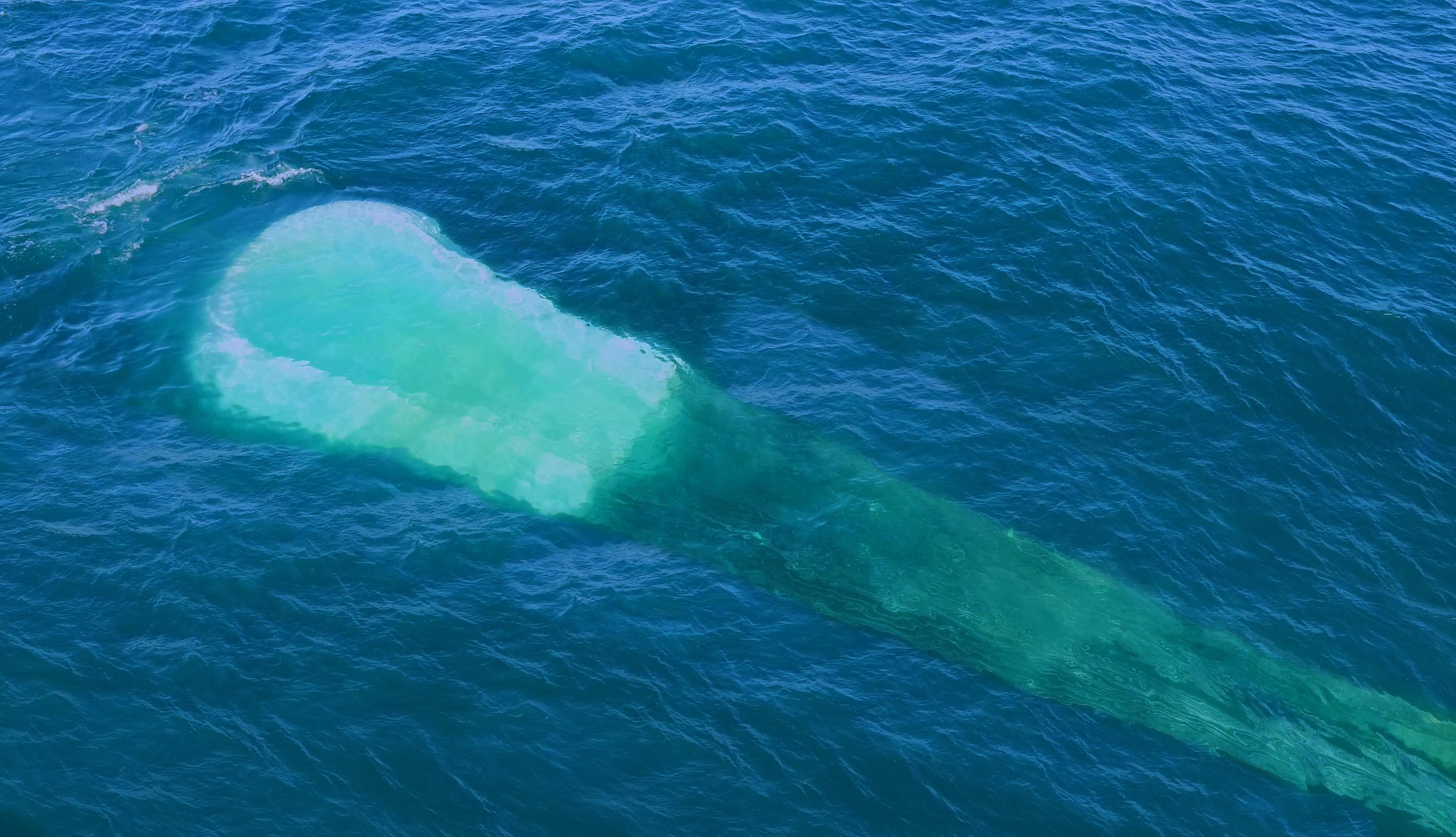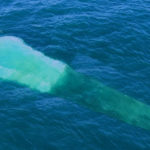Company:
W A Coppins Ltd Motueka,
Project Details
Fabric 1
High Tenacity nylon (special design for highest strength - 610 grams/m2
Producer:
W Wiggins Ltd
Supplier:
W Wiggins Ltd
Fabric 2
Dyneema Rope - (specially designed)40mm 162 ton Break Load, 7mm 7.5 ton Break Load
Producer:
Hampijdan (NZ) Ltd
Supplier:
Hampijdan (NZ) Ltd
Fabric 3
Spectra Webbing 50mm (specially designed)
Producer:
Webbings and Tape
Supplier:
Webbings & Tape
Fabric 4
PTFE
Producer:
W Wiggins Ltd
Supplier:
W Wiggins Ltd
Fabric 5
PVC Coated Polyester
Producer:
Gale Pacific NZ Ltd
Supplier:
Gale Pacific NZ Ltd
Engineer Name 1
Bill Coppins
Engineer Company 1
Coppins Sea Anchors Ltd
Design Name
Bill Coppins
Design Company
Coppins Sea Anchors Ltd
Fabrication Name
Ryan Coppins
Fabrication Company
Coppins Sea Anchors Ltd
Project Manager Name
Bill Coppins
Project Manager Company
Coppins Sea Anchors Ltd
Installation Name
Ryan Coppins, Bill Coppins
Installation Company
Coppins Sea Anchors Ltd
Please describe the project specifications
Whichever way you look at it, the vessel is massive. It is 886 feet long (270 meters – that’s 2½ football fields) and 170 feet wide (52 meters). Gross tonnage is over 100,000 tons. It is designed to process oil at sea, and can be connected to up to a hundred oil wells. Once in place it can handle 130,000 barrels of oil and 220 million standard cubic feet of gas a day. On our initial visit, prior to its departure from Korea, there were 1000 people working on this vessel.
Our challenge is just as massive. The vessel will travel half-way round the world, from Asia to the North Sea. There is a risk of damage on the way which could cause loss of control, and pose risks to lives, the vessel, and the environment. Storms are likely. Our job is to design and deliver a system that will not just stabilize this vessel in case of emergency, but steer it as well. The system will have to be based on the drag force required to control the FPSO in extreme conditions balanced with enabling the two 20,000 hp plus tugboats towing it to conserve fuel consumption and travel time. This will depend on less than 1 tons of fabric; to control such a vessel it will have to be very, very strong.
And we do not believe a conventional sea anchor will work adequately here. We will need to design a radical new system. We will have to test and demonstrate this and obtain the client’s approval, then manufacture and deliver it to Korea, and provide training. Time is limited. It’s a challenge we relish.
What was the purpose of this project? What did the client request?
The client is a leading international oil company. Its goal is to extend the life of deepwater oilfields west of the Shetland Islands, and to bring on further production from other fields in the area. To do this, the company had to replace its existing Floating Production, Storage and Offloading vessel (FPSO). A new state-of-the-art vessel was constructed in Korea, to be towed from there to this area.
This huge new vessel has a ‘moon pool’ in its hull (a large area within the hull, giving direct access to the sea below), into which numerous oil wells can be connected. This moon pool, though, could critically affect the lateral stability of the FPSO when under tow, therefore risking the safety of vessel and crew, as well as third party assets and the environment.
Structures called ‘brakers’ are fitted at the rear of the vessel to generate drag and minimise such risks in extreme conditions. But either of the brakers (or both) could be lost or damaged, due to environmental forces or accident, such as in a collision with a partly-submerged container. This would mean a loss of control and efficiency, and other serious impacts.
At this point an emergency steerage and control system is needed, to control yaw motions, provide stability, and make the tow manageable. The system would have to control the vessel in winds of up to Force 11 on the Beaufort scale. Following a worldwide search, the oil company approached our (very small) company to design and supply such a system.
After extensive research, development and testing, we determined - and could prove - that the conventional system the client had proposed would provide insufficient control. An entirely new system was required to provide the steerage and safety needed. This would combine a number of unique design features, including an entirely new and radical shape for its fabric components. We were able to demonstrate that this would out-perform any such system previously developed.
What is unique or complex about the project?
First, there is the challenge of designing and testing an entirely new system in a limited time frame. There is the difficulty in demonstrating the benefits, at a distance, to our client who had assumed a conventional system could be scaled up to provide the control required. And there were the consequences of any possible shortcomings.
Significance and Urgency
The cost of any system failure or inefficiency while the FPSO was en route would be considerable. A loss of stability in this vessel would mean large energy wastage and delays. Delays en route to the oilfields would result in large losses of oil production and company revenues.
But more significantly, a loss of control or failure in an emergency could have huge safety and environmental impacts, particularly if the failure occurred in congested spaces or environmentally sensitive areas. We had to prove that our design, and the fabric used, would function and hold fast in an emergency. Our company went to extraordinary lengths to ensure that it would, and to prove that it would.
Design and Manufacture
For maximum control in extreme conditions, a fresh approach was needed. A range of possible designs was developed and tested exhaustively. These tests proved that new and radical designs of the main fabric component were out-performing all other designs.
This component has a 27 feet (8.3 metres) diameter and an eccentric/conical shape, quite different from the client’s initial request. The new shape greatly increased stability and efficiency, decreasing lateral movement in tests from 20˚- 45˚ in a conventional design, as initially requested, to only 2.5˚. This difference is crucial, for safety and efficiency. The outline of this can be seen in Image no.4. While not fully inflated in this image (the unit rides deeper in the water and is not able to be seen at its designed working depth) this indicates its difference from a conventional (hemispheric) shape. A conventional shape would not have provided the control required here.
The system had to be designed for towing, stability and accurate steerage of the FPSO in extreme conditions (contrasting with, for example, a sea anchor principally designed to hold a vessel until help arrives). The massive weight and bulk of the vessel required the utmost strength in every component and linkage in the system’s design. To ensure that this would not fail under such pressure, we needed special, stronger fabrics. We had a unique material designed and made, in which warp and weft were almost equal under stress.
For deployment, the system is dropped over 120 feet (37 meters, or about 10 storeys) into the sea. We developed an innovative stainless-steel delivery unit for this. The system had to open flawlessly in stormy conditions, with ropes and components released in the right sequence, without tangling or snagging on the vessel or at sea. To provide effective steerage, the system had to work from a range of positions along the stern of the vessel; the required position would depend on which braker is disabled (or possibly both), the extent of damage, and the direction of weather, wind and currents. And to withstand damage in event of collisions with floating containers, debris or environmental conditions, it was designed to resist forces up to 240 tons.
Finally, the system was designed for recovery and redeployment, perhaps multiple times en route. Crew would need to be able to do this in challenging conditions.
What were the results of the project?
Because we were proposing significant differences in design, instead of the conventional design requested, and because the consequences of any failure in an emergency would be major, we had be proactive and very thorough in our analysis of performance and our communication of results to the client. To test and prove the advantages, seven scaled-down prototypes were manufactured and tested extensively at sea. Data and videos of the tests were relayed to our client. This was our first involvement with this major customer, and it was vital to build trust and provide the evidence. This took time, but was ultimately successful, and helped to guarantee the client’s commitment, confidence and informed decision-making.
Having demonstrated the relative merits of the seven prototypes and received the client’s approval of the recommended model, there were then just 11 weeks left for manufacture and installation on the FPSO prior to departure. This required the construction and assembly of a complex system, freight to Korea, fitting on the vessel, and detailed written instructions and training. The system was installed, on time and on budget.
The project was entirely successful and met all of the customer’s requirements. In addition to its specified purpose, for emergency use en route to the offshore oilfields, the device may now be retained on the vessel, in case of future loss of stability or other risks at sea.
It is likely that the innovations involved in this project, including the unique shaping of the fabric components, will have wider use. Such applications are now being actively pursued. We believe that many more will benefit from this bold new design in future.
Content is submitted by the participant. IFAI is not responsible for the content descriptions of the IAA award winners.




 TEXTILES.ORG
TEXTILES.ORG






